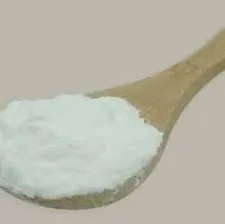Understanding Sodium Thiocyanate A Comprehensive Overview
Sodium thiocyanate, with the chemical formula NaSCN, is an important inorganic compound widely used in various industries, including pharmaceuticals, agriculture, and chemical synthesis. It is a colorless, hygroscopic solid that is highly soluble in water, making it an invaluable reagent in numerous applications.
Chemical Properties and Structure
Sodium thiocyanate consists of a sodium ion (Na⁺) and a thiocyanate anion (SCN⁻). The thiocyanate ion is a versatile species, characterized by its simple linear structure, where sulfur (S) is bonded to carbon (C), which is further linked to the nitrogen (N) atom. This structure gives rise to unique chemical properties that enhance its utility in different fields. Sodium thiocyanate's molecular weight is approximately 81.07 g/mol, and its melting point is around 283°C, while it has a high solubility in polar solvents like water and ethanol.
Industrial Applications
1. Chemical Synthesis Sodium thiocyanate serves as a critical reagent in organic and inorganic synthesis. It is commonly used in the production of thiocyanate esters, which are essential in various chemical reactions, including those leading to the formation of pharmaceuticals.
2. Agriculture In agriculture, sodium thiocyanate acts as a fungicide and herbicide. It is employed to control specific pests and diseases that threaten crop yields, thereby enhancing agricultural productivity. Its application must be carefully managed to avoid environmental impact and ensure safety.
3. Pharmaceuticals In the pharmaceutical industry, sodium thiocyanate is utilized in the formulation of various drugs and compounds. It has been studied for its antithyroid effects, particularly in the treatment of hyperthyroidism, where it inhibits the synthesis of thyroid hormones.
sodium thiocyanate cas no

4. Analytical Chemistry Sodium thiocyanate is commonly used in analytical chemistry to detect metallic ions. The formation of colored complexes between thiocyanate and certain metals can be used in spectrophotometric analysis, allowing for the quantification of these metals in various samples.
Safety and Environmental Considerations
While sodium thiocyanate has numerous benefits, it is essential to handle it with care. It can be toxic if ingested, inhaled, or absorbed through the skin. Prolonged exposure may lead to severe health issues, including respiratory problems or even cyanide poisoning due to the release of cyanide ions upon degradation in the body. Therefore, proper safety measures, including using personal protective equipment and adhering to safe handling practices, are crucial when working with this compound.
From an environmental perspective, sodium thiocyanate should be disposed of properly to prevent contamination of soil and water sources. Regulatory agencies set guidelines to manage its use and disposal, ensuring environmental safety and sustainability.
Conclusion
Sodium thiocyanate is a valuable compound with a wide range of applications across various industries. Its chemical properties make it an essential reagent in chemical synthesis, a useful agent in agriculture, and a key component in pharmaceutical formulations. However, with its utility comes the responsibility of safe handling and environmental stewardship.
As research continues into enhancing the efficiency and effectiveness of sodium thiocyanate in applications, understanding its properties and implications will remain vital for industries that rely on this compound. Whether in the lab, field, or pharmacy, sodium thiocyanate will likely play a crucial role in developing innovative solutions for the future.

